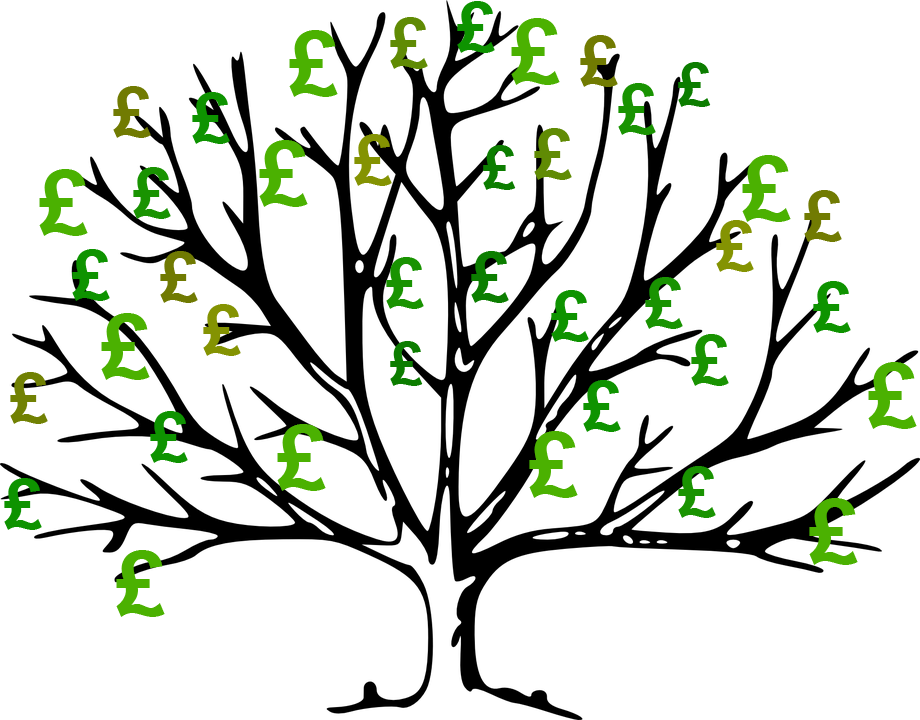MMT – a Magic Money Tree or Modern Monetary Theory?
 Is there a ‘magic money tree’? Is it desirable for central banks to create money to finance government deficits?
Is there a ‘magic money tree’? Is it desirable for central banks to create money to finance government deficits?
The standard thinking of conservative governments around the world is that creating money to finance deficits will be inflationary. Rather, governments should attempt to reduce deficits. This will reduce the problem of government expenditure crowding out private expenditure and reduce the burden placed on future generations of having to finance higher government debt.
If deficits rise because of government response to an emergency, such as supporting people and businesses during the Covid-19 pandemic, then, as soon as the problem begins to wane, governments should attempt to reduce the higher deficits by raising taxes or cutting government expenditure. This was the approach of many governments, including the Coalition and Conservative governments in the UK from 2010, as econommies began to recover from the 2007/8 financial crisis.
 ‘Modern Monetary Theory‘ challenges these arguments. Advocates of the theory support the use of higher deficits financed by monetary expansion if the money is spent on things that increase potential output as well as actual output. Examples include spending on R&D, education, infrastructure, health and housing.
‘Modern Monetary Theory‘ challenges these arguments. Advocates of the theory support the use of higher deficits financed by monetary expansion if the money is spent on things that increase potential output as well as actual output. Examples include spending on R&D, education, infrastructure, health and housing.
Modern monetary theorists still accept that excess demand will lead to inflation. Governments should therefore avoid excessive deficits and central banks should avoid creating excessive amounts of money. But, they argue that inflation caused by excess demand has not been a problem for many years in most countries. Instead, we have a problem of too little investment and too little spending generally. There is plenty of scope, they maintain, for expanding demand. This, if carefully directed, can lead to productivity growth and an expansion of aggregate supply to match the rise in aggregate demand.
Government deficits, they argue, are not intrinsically bad. Government debt is someone else’s assets, whether in the form of government bonds, savings certificates, Treasury bills or other instruments. Provided the debt can be serviced at low interest rates, there is no problem for the government and the spending it generates can be managed to allow economies to function at near full capacity.
The following videos and articles look at modern monetary theory and assess its relevance. Not surprisingly, they differ in their support of the theory!
Videos
 Modern Monetary Theory explained by Stephanie Kelton
Modern Monetary Theory explained by Stephanie Kelton Demystifying Modern Monetary Theory
Demystifying Modern Monetary Theory
Institute for New Economic Thinking on YouTube, Bill Mitchell (28/12/14)
CNBC, Stephanie Kelton (4/3/19)
Articles
- Modern monetary theory: the rise of economists who say huge government debt is not a problem
- Modern Monetary Theory: How MMT is challenging the economic establishment
- What is Modern Monetary Theory and is it THE answer?
- MMT: what is modern monetary theory and will it work?
- MMT: the magic money tree bears fruit
- Modern Monetary Theory is no Magic Money Tree
- “Modern Monetary Theory” Goes Mainstream
- How Boris Johnson’s Conservatives have become Magic Money Tree huggers
- Ignore the impacts of debt-fuelled stimulus at your peril
- Modern Monetary Theory, explained
The Conversation, John Whittaker (7/7/20)
ABC News, Gareth Hutchens (20/7/20)
Sydney Morning Herald, Jessica Irvine (2/7/20)
MoneyWeek, Stuart Watkins (14/7/20)
MoneyWeek, Stuart Watkins (17/7/20)
Adam Smith Institute, Matt Kilcoyne (20/5/20)
Forbes, Nathan Lewis (10/7/20)
The Scotsman, Bill Jamieson (16/7/20)
Livewire, David Rosenbloom (14/7/20)
Vox.com, Dylan Matthews (16/4/19)
Questions
- Compare traditional Keynesian economics and modern monetary theory.
- Using the equation of exchange, MV = PY, what would a modern monetary theorist say about the effect of an expansion of M on the other variables?
- What is the role of fiscal policy in modern monetary theory?
- What evidence might suggest that money supply has been unduly restricted?
- When, according to modern monetary theory, is a rising government deficit (a) not a problem; (b) a problem?
- Is there any truth in the saying, ‘There’s no such thing as a magic money tree’?
- Provide a critique of modern monetary theory.